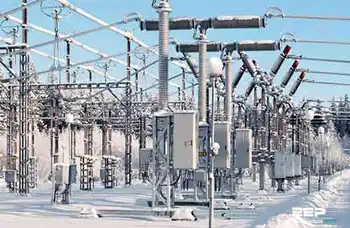Solar-power feed tariffs a windfall for homeowners
That's rich. It amounts to an 82 per cent increase over the previous rate offered under the province's standard offer program, which was launched two years ago but failed to stimulate large-scale deployment of rooftop systems that was envisioned.
This time the government is more serious about driving demand. The ambitious aim is to see 100,000 solar rooftop systems deployed across the province as a result of the newly proposed rate, which is called an advanced feed-in tariff.
"It's fantastic," says Blair Beesley, founder of SolSmart Energy Solutions Inc., which has been installing solar thermal and photovoltaic systems around Toronto since 2004.
When the original 42-cent tariff was introduced Beesley expected to be busy. He hired one of the only certified solar PV installers in Canada at the time. But demand never took off. Beesley decided in 2007 to stop offering solar PV and focus strictly on solar thermal heating systems.
"We couldn't generate enough business to keep our guy employed," says Beesley. With the new tariffs, which are expected to take effect later this summer, Sol- Smart plans to get back into solar PV. "You can now run a viable business," he adds.
What does this mean for homeowners looking to take advantage of the new pricing? The Ministry of Energy estimates that a homeowner who wants to install, for example, three kilowatts of solar PV can expect to pay around $30,000 for the panels, equipment and installation.
"This would provide enough electricity to meet one third of their consumption and would generate about $7 per day," according to a ministry backgrounder. "This payment would result in approximately $2,500 in revenue per year for the homeowner, resulting in about a 12-year payback."
To be clear, the solar electricity a residential system generates isn't consumed by the home. All of the power is fed into the electricity distribution system outside your home. Homeowners, in essence, become power generators. Every single kilowatt-hour that's produced generates 80.2 cents worth of revenue for the homeowner.
Let's fact-check the government's numbers. According to a 2006 federal study, the average one-kilowatt rooftop PV system in Toronto would generate 1,161 kilowatt-hours per year. At 80.2 cents per kilowatt-hour, that works out to $931 annually. A three-kilowatt system would therefore earn $2,793 a year.
At $30,000 for such a system, divided by $2,793, it works out to a payback of just under 11 years (excluding interest you may have to pay on the initial capital cost). It means that the remaining nine years in the 20-year contract with the power authority would pay out an additional $25,000 for the homeowner.
The government's numbers appear to add up. "It's totally legitimate," confirms Beesley. So, is there a catch? Well, there is that whole shadow problem.
Fact is, not every residential property is ideal for solar PV. You need to have a sloping, south-facing roof that isn't blocked by trees or other buildings as the sun travels each day across the sky. Alternatively, if you have a flat roof, you can mount the panels at an angle.
It's worth keeping in mind that even a little bit of shadow from a tree branch can significantly reduce the system's power output. Will a tree beside your house grow so tall that 10 years on it will block your panels? Will a neighbour build a second or third level?
There's also that nagging tax thing. Your three-kilowatt solar system might be small, but in the eyes of the Canada Revenue Agency, your contract with the power authority makes you a business. This means the income you earn from selling kilowatts is taxable.
But don't stress, says Toronto resident Mike Brigham, who since January has been feeding power from his 5.8 kilowatt solar system into the grid under the old standard offer program.
Brigham says your taxes might become more complicated, but you can reduce your taxable solar income by depreciating the capital cost of your PV system. If, for example, you earn $3,000 each year you can bring the taxable portion to zero by deducting $3,000 each year over 10 years – that is, until the $30,000 cost of the system has been fully depreciated.
"It means you can pretty much write off everything you earn," says Brigham, who still advises: "Hire an accountant."
Related News

Marine Renewables Canada shifts focus towards offshore wind
HALIFAX - With a growing global effort to develop climate change solutions and increase renewable electricity production, along with Canada’s strengths in offshore and ocean sectors, Marine Renewables Canada has made a strategic decision to grow its focus by officially including offshore wind energy in its mandate.
Marine Renewables Canada plans to focus on similarities and synergies of the resources in order to advance the sector as a whole and ensure that clean electricity from waves, tides, rivers, and offshore wind plays a significant role in Canada’s low-carbon future.
“Many of our members working on tidal and wave energy projects also have expertise…




